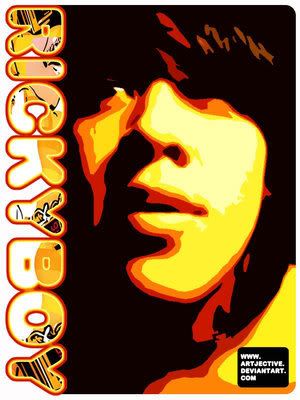TROY, N.Y. — Adam Zaretsky once spent 48 hours playing Engelbert Humperdincks's Greatest Hits to a dish of E.coli bacteria to determine whether vibrations or sounds influenced bacterial growth. Watching the bacteria's antibiotic production increase, Zaretsky decided that perhaps even cells were annoyed by constant subjection to "loud, really awful lounge music."
This sense of humor is a huge component of Zaretsky's work in the growing field of bio-art, a broad term for the blend of art, technology and science that is attracting artists, scientists and controversy. Having recently taught at the Rensselaer Polytechnic Institute, Zaretsky has become a prominent figure in the realm of bio-art and RPI is becoming a Petri dish for the cultivation of new works.
.:.:.:.:.:..:.:.
My Insights
This information is very overwhelming to me. Though I don’t fully considered myself as an artist, for me bio art is really a breakthrough in the field of art as well as in science. And it’s pretty amazing how bio-artist bridge the gap between art and science. I find these artist very genius and talented. Who would think that sound vibrations could affect bacterial growth and generate art works to it? Amazing huh?
By just having bioluminescent bacteria and rotting fruit, you could generate bio-art to it. And there are a lot of ways to create bio-art through other organisms. As stated by Adam Zaretsky, a bio-artist, "(Bio-art) is a way of looking where we interface with ourselves, human culture and the rest of the living world. And this is true. As I see it, he is trying to create an artwork by interacting into a living medium. These living medium could be bacteria, animals, plants and even humans.
Right now Adam Zaretsky and other bio-artist are now promoting this kind of art. As a matter of fact, they are offering short course of this form of art. They are actually teaching this course at "VivoArts: Art and Biology Studio". The course guides a mix of artists, scientists and medical students in the exploration of life sciences through projects that examine the human connection to living systems.
Though this form of art is becoming popular, contradictions and debates regarding moral issues are also on the rise. "Transgenic manipulation of animals is just a continuum of using animals for human end," regardless of whether it is done to make some sort of sociopolitical critique, said Alka Chandna, a senior researcher with PETA in Norfolk, Va. "The suffering and exacerbation of stress on the animals is very problematic."
By just having bioluminescent bacteria and rotting fruit, you could generate bio-art to it. And there are a lot of ways to create bio-art through other organisms. As stated by Adam Zaretsky, a bio-artist, "(Bio-art) is a way of looking where we interface with ourselves, human culture and the rest of the living world. And this is true. As I see it, he is trying to create an artwork by interacting into a living medium. These living medium could be bacteria, animals, plants and even humans.
Right now Adam Zaretsky and other bio-artist are now promoting this kind of art. As a matter of fact, they are offering short course of this form of art. They are actually teaching this course at "VivoArts: Art and Biology Studio". The course guides a mix of artists, scientists and medical students in the exploration of life sciences through projects that examine the human connection to living systems.
Though this form of art is becoming popular, contradictions and debates regarding moral issues are also on the rise. "Transgenic manipulation of animals is just a continuum of using animals for human end," regardless of whether it is done to make some sort of sociopolitical critique, said Alka Chandna, a senior researcher with PETA in Norfolk, Va. "The suffering and exacerbation of stress on the animals is very problematic."
Chandna also warned that scientists can't always predict what other health problems the animals will suffer from their alterations. "We're all in support of creativity but we're opposed to all suffering." Aside for animal activists, bio-artists also face national legal scrutiny. As a proof, Steven Kurtz, a professor at SUNY Buffalo, was arrested on federal terrorism charges nearly three years ago after police discovered certain types of bacteria and other biological materials in his home. It may sound funny because your aim is to just create art from bacteria and then suddenly you will be accused of terrorism. Funny huh? Hehehe…. But honestly, it is a serious matter. Improper use of bacteria may result to different diseases and a threat to society. That is why bio-artist is working out to combat this through the creation of the Center for Bio-Media, a gallery, lab and educational facility that will be open to the public.

No comments:
Post a Comment